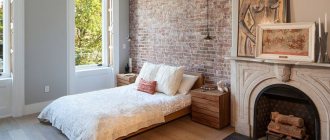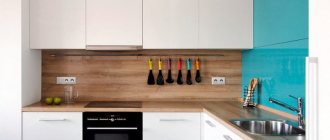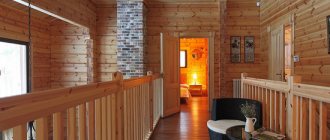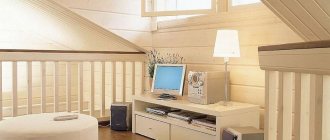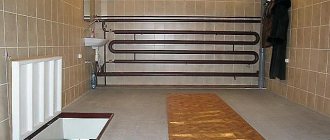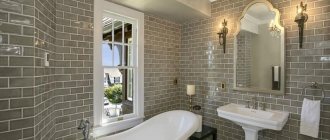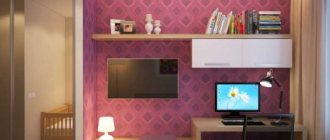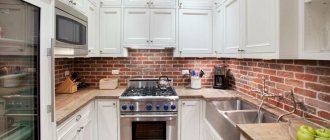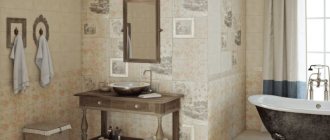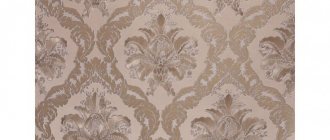Brick looks great as a building cladding, but it is quite an expensive pleasure, and the installation is quite long and voluminous in scale. Therefore, every day it becomes more and more popular to cover the facades of buildings using brick-like wall panels. This design looks laconic and stylish. Installation work goes quickly. Brick panels for interior wall decoration have many advantages.
Decorating the walls inside an apartment, as well as the facade of a house, with decorative brick or a material that imitates brickwork has never gone out of fashion.
The use of “brick” decor in the premises allows you to add bohemianism, a touch of industrialism and even a touch of audacity to the appearance of the room.
Pros and cons of brick wall panels
Pros:
- Easy to install.
- Good sound insulation properties.
- Environmentally friendly.
- Ease of care.
- Thermal insulation.
- Moisture insulation.
- Wide scope of application.
- Light weight structures.
- Affordable price.
- Wide variety of designs.
- The size of the space is not reduced because the panels are thin.
- High quality.
- Durability.
- Resistance to amplitude fluctuations.
Minuses:
- Easily subject to deformation and scratches.
- Fire hazard.
This design is relevant in loft, hi-tech, pop art, fusion and other style interiors.
Imitation brick made of porcelain stoneware
Ceramic granite is the most reliable and high-quality material for creating bricks. It differs from ceramics in that during production granite shavings are added to the solution, and then the material is fired twice in a kiln. This is what gives it such strength and durability.
The advantages of porcelain stoneware bricks include:
- Full resistance to temperatures (withstands frosts down to -50)
- Moisture resistance
- Easy to clean and does not absorb dirt
- Service life from 30 years.
The colors can be any - on store shelves there is a large selection of shades that will suit any interior.
On a note! Porcelain stoneware is perfect not only for wall cladding, but also for floor cladding. Very often it is used simultaneously on two surfaces.
Porcelain stoneware brick looks original and interesting in the bathroom, dining room or kitchen, as well as in the hall.
Where are panels in the form of brickwork used?
This type of fittings has a wide range of applications. They are installed both on the facades of buildings and indoors, for example, in apartments, cafes, office premises, etc.
Fireplaces and columns are decorated with brick-like wall panels. Brickwork fits harmoniously into the design of modern kitchens and bedrooms.
Decorative brick wall panels are a universal finishing material for interior decoration of room walls, partitions, podiums, fireplaces, columns and so on.
Advantages and disadvantages of products
Brick walls can often be found in styles such as loft and hi-tech. Since these areas have become increasingly popular in recent years, not only natural products, but also materials that imitate brickwork have become in high demand in the construction market.
Wall panels deserve special attention, as they have a number of advantages not only over other types of brick imitation, but also over brick cladding itself.
The main advantages of panels for interior wall decoration :
- Environmental friendliness. Almost all wall panels are made from natural raw materials, and no harmful components are added to them during the production process.
- Moisture resistance. The products are highly resistant to moisture absorption, so mold and mildew do not form on them. They can even be used in the bathroom and kitchen.
- High degree of decorativeness. Coatings that imitate brickwork look realistic even with a smooth surface. Textured models sometimes cannot be distinguished from real material unless you get closer to them.
- Variety in design. With a variety of panel options, you can always choose the right solution for a particular interior. Products can be of different shades, textures and masonry patterns.
- Easy care. Wall panels do not require complex maintenance. Since they are not afraid of chemical attack, they can be cleaned with detergents.
- https://mr-build.ru/wp-content/uploads/2017/01/paneli-pod-kipich-na-kuhne.jpgLong service life. Typically, such coatings last up to 15-20 years, while maintaining their original appearance. If you properly care for the panels, then repairs may not be necessary for many years.
- Easy installation and dismantling. Finishing materials are light in weight, so they can be easily and quickly mounted on the wall in different ways. In addition, if one of the panels is damaged, the required area can be restored without any problems with a new product.
- Affordable price. Panels that imitate brick will cost much less than the real material.
With wall coverings you can improve the sound and heat insulation of a room. If there are minor cracks and bulges on the wall surfaces, they will easily disappear under the panels.
Like all materials, brick-imitation panels have certain disadvantages . Firstly, they are subject to mechanical damage. For this reason, they cannot be installed in areas with high loads. Secondly, the coating is exposed to high temperatures. It is necessary to ensure that there are no open flame sources nearby. But these disadvantages do not prevent people from purchasing high-quality material, which, if used correctly, will decorate the walls for a long time.
Types of building panels with imitation brick
Imitation brick is found in a wide variety of decorative designs. Sometimes it is difficult to determine by appearance that what you are looking at is a pseudo-brick. Plastic, MDF and others are used as materials; let’s look at them in more detail.
The parameters by which finishing materials differ are appearance, installation method, material, dimensions.
PVC panels
PVC panels are distinguished by their plasticity and flexibility. This material is moisture resistant, which is why it is often used on terraces, kitchens and restrooms.
In the production of PVC tiles, tiles are designed using the method of applying special durable paints or gluing a film with an image. It also creates great visual volume.
The shape of the plastic can be voluminous, which even better helps to achieve resemblance to real brick.
PVC panels are flexible, so if the walls have unevenness, holes or other flaws, panels can be installed on them without any problems.
MDF panels
MDF is essentially compressed wood chips. MDF is a fairly durable material and also rigid. Standard MDF planks should not be used in rooms where humidity is high. If the humidity is high, then the use of MDF sheathing with lamination is recommended.
This material is intended only for interior cladding. They cannot be installed on building facades.
Glass fiber reinforced concrete
Glass fiber reinforced concrete (GFRC) is a type of artificial stone. Thanks to him, we can observe masterpieces of modern architectural art in cities. Previously, it was used mainly only for building facades, but now the areas of use have become wider.
The material is used for decorating cornices, columns, and fencing balconies.
This cladding was often used for cladding low-rise urban houses.
Glass fiber reinforced concrete is a unique material. It is resilient and protects the underlying material. This artificial stone can be found mainly in white and gray, but it also looks very stylish in other colors. It perfectly imitates brickwork. An ordinary person who has no idea that the cladding of a building can be plastic will not even be able to imagine, looking at glass fiber reinforced concrete, that it is not brick.
A design of this kind, if installed correctly, can last up to 25 years without losing its beauty and basic properties.
A big plus is that this type of brick-like decorative panels for interior decoration can make the room aesthetically beautiful, and will not load the structure at all.
Self-adhesive bricks
Essentially it is plastic, which means the bricks are flexible, thin and light. Humidity is not a problem for this material, so it can be installed in any room where water is used or the air is sufficiently humid.
The influence of high temperatures can deform the plastic, and the disadvantages include the fragility of the material, so much so that it can be cut with a stationery knife or even simple scissors.
Used for both exterior and interior decoration.
But the advantage of self-adhesive bricks is their reasonable price.
Gypsum panels
Gypsum panels are a new product of our time, gaining popularity day after day. The material is strong, durable and lightweight. Brick-like gypsum panels will look harmonious in any room: kitchen, bedroom, living room, etc. Especially if the apartment has a loft style.
These types of panels are used only for interior decoration. They exactly replicate the brickwork.
Types of tiles for brick-like interior decoration and installation techniques
You can decorate surfaces in living rooms and utility rooms with tiles. It is successfully used in baths, toilets, bathrooms, passage corridors, loggias and balconies. When choosing a finish, designers take into account the interior style and the colors present in the room.
Important! Moisture-resistant ceramics and polymer clay models are well suited for saunas and baths.
The cladding differs in size, texture, color Source www.1obl.ru
The installation method depends on the surface configuration and design. There are several types of brick tiles:
- ceramic;
- clinker;
- polymer;
- concrete;
- plaster.
Clay is used to make ceramic products. Sand, various impurities and dyes are allowed into the main raw materials. Using additives and coloring pigments, manufacturers create models that differ from each other in texture and shades.
Ceramic tiles are resistant to moisture and have an attractive appearance Source www.viakeramika.ru
Brick cladding is more often used for interior decoration. The finishing material has a smooth or slightly rough surface with a matte sheen. Design masters use textured finishing models in the interiors of cafes and bars when they need to artificially “age” walls, columns, and counters.
Well suited for interiors that need to add an antique effect. Ceramics are suitable for finishing all interior walls in any room.
Clinker tiles are made from refractory clay. It has the same qualities as ceramics.
Gypsum finishing is not inferior in appearance to more expensive material, but it actively absorbs moisture. Plaster must be coated with water-repellent protective impregnations.
Concrete tiles are made by pressing. Finely crushed natural stone is added to the mixture. The material is durable and environmentally friendly.
Concrete finishing tiles are cheaper than ceramics Source retrotok.ru
There are several ways to lay bricks on the surface. The most common masonry option is when each new row is laid out so that the middle of the brick falls exactly on the seam between the bottom tiles.
With the usual method of laying, the middle of the brick fell exactly on the seam between the bottom tiles. Source kd-stone.ru
The parts are laid with and without seams. This nuance depends on the excellent tastes of the owner of the house or public premises. Seamless installation is easier and faster.
Important! During operation, glue drips must be removed immediately. Once the stains harden, it will be difficult to wipe them off.
Installing decorative tiles with joint joints Source izplitki.com
It is more difficult to install decorative tiles with joint joints. This method is popular among interior designers; walls with this installation look impressive.
The parts are attached to each other at a short distance. Ideal seams are created using spacers that are installed between the elements. These can be pieces of cardboard, plastic, wooden planks. It is not recommended to create gaps wider than 1 cm.
The filling of the seams begins after the glue has completely dried. The cracks are carefully filled with solution. Excess putty is removed with a damp sponge.
A white wall with imitation brickwork will harmoniously fit into different stylistic directions Source izplitki.com
To preserve the appearance and quality of the tile, it is treated with a protective layer of varnish. This product is always sold in stores along with decorative cladding.
Before applying the varnish layer, the surface is cleaned of dirt and dust. Before this, the solution must be tested on a separate element. If the test treatment was successful, you can apply varnish to the entire surface.
After one coat you will get a matte shine. If the obtained effect is not enough, you need to repeat the procedure after the varnish has dried. Usually craftsmen apply 2-3 layers of varnish.
To get a more original surface, you can paint some bricks in other, brighter colors.
Selection of high-quality wall panels imitating brick
When choosing wall panels, pay attention to the conditions under which they can be used. Not all can be used in wet areas. The panel should not be very thin, since the thinner it is, the more susceptible it is to breakage.
The modern range of finishing materials allows you to choose one of several options presented.
Try to avoid very cheap coatings, since a low price is an indicator of not the highest quality materials.
Main Applications
Decorative panels with imitation brick are used in the interior decoration of many buildings . The material is used to decorate residential premises and corridors of private houses and apartments. The decorative product is often used for cladding kitchens and loggias. Waterproof material is an excellent solution for finishing bathrooms, showers and toilets.
Covering with a brickwork pattern is widely used in the design of shops, shopping centers, hotels, cafes, restaurants and other public places. In this case, “brick” panels are used to decorate bar counters, walls, columns and arched structures.
Light versions of the products can be used to decorate all walls in the room. Bright and dark options should be used for one wall, and for the remaining surfaces you need to choose a light coating, which can be represented by other finishing materials: wallpaper, paint, plaster or tiles.
A large amount of brick pattern can visually overload the interior . Designers recommend using panels that imitate brickwork as accents. In the kitchen, you can decorate your apron with coating. In bedrooms, the original decoration is usually done above the head of the bed. In the living room it is used to accent the central wall. The material can also be used to cover a fireplace, plasma TV, large paintings or doorways.
How to properly cover interior walls with brick panels
First you need to make sure that you have all the necessary tools for sheathing. You will need a screwdriver, a tape measure, a building level, a special stapler and a hand saw.
Sheathing tools.
Glue installation
Installing panels with glue is only possible if the wall surface is absolutely flat. If this is not the case, first start leveling the walls and then covering them. Don't be afraid that the process will take a long time. No, that's not true. This cladding method is also very easy and fast.
First you need to level the walls.
Installation on the lathing
At the base, wooden planks measuring 20*20 cm are used. The wooden sheathing will serve as a frame for the panels. Under no circumstances should you use such a frame in rooms with high humidity.
An antifungal solution must be applied to the wooden frame.
Fastening the frame
At the first stage, you need to secure wooden slats around the perimeter of the room with a distance between them of at least 50 cm. Also, the slats must be fixed to the ceiling and floor. You need to mark on the wall how the panels will be placed. “Sockets” for fasteners are attached. Vertical slats are installed. Necessarily! When installing slats, check with a building level how well and evenly you installed the slats.
Installing a metal frame is very similar to installing a wooden one.
If you want to improve the sound insulation of a room, you can place insulation between the slats.
Finishing with cladding panels
After finishing work on the frame, you can begin finishing with cladding panels. First, the starting profile is attached using a stapler. Then the wall panels are attached, again the fixation is done with a stapler. The next stage is attaching the finishing profile. This completes the installation work.
The final stage is finishing with panels.
Imitation clinker brick
Clinker brick is a special brick made from certain types of clay. This brick actually resembles natural brick more than any other material. Clinker itself is quite dense, so it is impossible to create it at home. When making such bricks, a special technology is used: firing is carried out in kilns with a temperature of 1200 degrees.
On a note! When operating, be sure to use a special glue, ideally from the same company as the brick itself. And don’t forget to pay close attention to the shade of all the bricks. Quite often, one set can contain bricks of different colors.
How to care for brick panels for interior decoration
Caring for plastic panels is not difficult and time-consuming, but it is necessary to ensure that its appearance remains at its best. There are rules to follow. In order for the process of cleaning the panels to go quickly, free up the space from unnecessary things. Wear rubber gloves to protect your hands from exposure to detergents. If there is grease on the surfaces that meet the plastic panel, remove it first. To care for plastic, prepare soft sponges or flannel cloth. The water temperature should be approximately 40 degrees (warm).
Removal of dust and dirt from the surface of PVC boards imitating the aesthetics of brick should be carried out exclusively with a damp cloth of soft texture, slightly moistened with a soap solution.
Avoid using scouring powders as they can leave streaks on the tiles and look messy. In addition to stains, microcracks may appear on the surface, which will spoil the appearance of the material. Yes, on decor that imitates brick, microcracks will, of course, not be noticeable, but it is still better to handle the material carefully so that the panels do not collapse.
Buy a gel-based cleaner; it will gently remove traces of grease and other contaminants.
Before you start cleaning, test the cleaner on an inconspicuous area. If no undesirable consequences have arisen, then you can begin cleaning.
If one panel is damaged, it can be easily dismantled and replaced with a new one. However, this must be done carefully, without haste.
If you prefer laundry soap to clean surfaces, then you can safely use it in this case, rubbing it and dissolving it in water.
It is also possible to clean it with vinegar, baking soda, bleach and a melamine sponge.
Design techniques for laying tiles
Many people refuse to use stone-like tiles for interior decoration in their apartments, for fear of making the room gloomy. However, these fears are unfounded, because there are many compromise design solutions when you can not cover the entire room, but only one of the walls, a niche or a ledge. The main thing is to think over the overall design concept for the entire room.
Imitating protruding brickwork from broken plaster is an interesting idea, but it must be consistent with the overall style. Sometimes protruding corners are trimmed with brickwork, but such a design decision depends entirely on the wishes of the apartment owner.
Decorative wall decoration using imitation brickwork
If the room has a fireplace or stove, then you should take care of the appropriate decoration of the space around it. Designers do not recommend completely covering walls with imitation brick for interior decoration; it is better to do this around the hearth or in a small area.
Helpful advice! Completely brick walls near the fireplace blur this decorative element, and it is completely lost. A combination of several finishing materials will help highlight the hearth and give it charm.
When choosing tiles for a room, do not forget about its color. Too dark colors will make the room gloomy and barracks-like. Sand tones, on the contrary, will add warmth and space. Supporters of conservatism may prefer red tones of natural masonry in the living room, and choose white brick-like tiles for the bedroom.
Do not forget about such an important point when choosing a tile as its surface. It can be either smooth or matte. Experts truly believe that a shiny surface looks unnatural. However, if it is combined with the corresponding elements and decoration of the rest of the room, the result can be unexpected and interesting.
Brickwork combined with white kitchen furniture looks impressive
White glossy brick tiles are actively used for tiling kitchens or bathrooms. The smooth surface is easy to clean and does not absorb moisture or various contaminants.
Beautiful examples of design using brick panels
Brick panels for interior wall decoration can transform even the smallest rooms and spaces, making it visually stylish and expensive.
There are a huge number of options for decorating interiors; mostly, of course, the image of red or brown bricks is used. But many people prefer light walls in the room, so don’t forget about white brick panels. It adds cleanliness, lightness and a touch of sophistication to rooms.
Brick walls are most often used in high-tech and loft styles.
But don’t be afraid to add brick walls and other style solutions; even in the most romantic setting, one brick wall will only add zest to your interior.
Choosing brick tile color
The selection of cladding depends on the purpose of the room. The tile can be a bright spot around which the composition is built. For example, for a room in olive tones, you can buy finishing material in a sand or bright terracotta shade. Beige tones will look harmonious, they will softly fit into the interior.
Olive, emerald-colored furniture and curtains will look good against the background of red-brown “brick” walls. They will become an element that attracts attention.
Craftsmen create a composition from elements of different shades. The design may contain parts painted in contrasting colors. The surface cladding is often made from bricks that are similar in tone.
Manufacturers of brick wall panels
Most self-respecting manufacturers have brick-colored tiles in their collections, because this is a trend that is in great demand.
The Leroy Merlin brand is a very well-known supplier. The company has a huge variety of decorative plastic tiles, including many color schemes for brickwork.
The product is of good quality and reasonable prices.
European company Forte, whose main office is in Italy. The only negative is the high price.
The products have excellent quality, stylish design, and the tiles are durable.
The Belgian company Venta has been on the market since 1993. Good value for money. The disadvantage of this company's products is their fragility.
The panels do not lose their bright colors even after long-term use.
Soft tiles and their installation
Externally, these are soft, thin bricks that can be laid both on the outside and on the inside of the building. The material is resistant to the external environment, does not harbor microorganisms, and is highly durable.
Flexible tiles are not only decorative, but also protect the coated surface, so they are laid in the bathroom, living room, hallway or kitchen.
Due to its flexibility, tiles cover surfaces of varying levels of complexity. If necessary, it can be cut well with scissors.
Soft tiles are easy to install:
- the surface where the tiles will be applied is first leveled;
- it is marked into rectangles;
- special tile adhesive is applied to the wall;
- flexible tiles are laid out;
- Using a brush, the seams are aligned.
Conclusion
Due to the fashion for the loft style, the demand for wallpaper and plastic brick panels has increased quite significantly. In this regard, the choice of colors has increased, and everyone can choose the shade they need for their interior.
The choice of plastic panels should be approached carefully, since each material has limitations and recommendations for use.
Installation of plastic panels cannot be carried out independently by a person without experience. But one cannot help but rejoice in the fact that the work proceeds quickly and does not require large financial costs.
In addition to transforming the appearance, a room with plastic panels will automatically be equipped with heat and sound insulation.
If these rules are followed, slabs for cladding wall surfaces from the inside of the house will last as long as possible.
Use in stylistic interiors
With the variety of types of brick panels, you can create an original and extravagant interior. Brick finishing is welcome in many styles. If it is not possible to purchase real or decorative brick, then panels with imitation brick would be the ideal solution for finishing the premises.
The most common brickwork is found in the following directions:
- Loft. American style, which originated in the mid-20th century, is today one of the most popular trends in interior design. You can create the look of an abandoned factory premises with red brick panels. Options with terracotta shades would be appropriate. A brick wall goes well with rough wood and painted surfaces in neutral colors. Cold “brick” looks great with soft sofas, carpets, curtains and other textiles.
- High tech. Modern style welcomes geometrically correct proportions and pure, solid colors. In a room with such features, a business atmosphere is felt. To create a spectacular and neat interior, decorative slabs imitating white or gray brick with a pattern of smooth masonry are used.
- Country. For the rustic direction, a coating with imitation of antique brick is used. To make the room look cozy and harmonious, you need to choose light shades of finishing material. You can complement the unusual decoration with massive wooden beams on the ceiling.
- English style. The interior in the English direction is a little reminiscent of a country house, but more expensive things are already used here that look sophisticated and respectable. To accent a wall or fireplace surround, use panels with a pattern of neat brickwork, made in terracotta tones.
- Gothic. The mysterious and mystical Gothic interior looks impressive not only with stone, but also with brick decoration. To create an atmosphere of dark romance, you should choose panels in dark gray or black colors. Typically, a brick pattern is selected with the effect of roughness and wear. For residential premises, it is recommended to use such a coating as an accent, and for the remaining walls it is better to choose plain wallpaper of the desired shade.
With panels reminiscent of brickwork, you can create an interesting and shocking design. A budget option for finishing materials with imitation brick will be the best solution for those people who like to make repairs frequently. With such coatings you can quickly change the style and concept of the interior.
Creating a style
For gypsum stone there are no restrictions on the premises where it can be used. Much depends on a sense of appropriateness and moderation.
Bedroom
The bedroom is designed to gain strength and relax. Therefore, it is necessary to pay special attention to comfort. To do this, it is important to avoid flashy tones and colors, as well as an abundance of different styles. Therefore, gypsum bricks must be used with caution in this room. Brick can be placed at the head of the bed to highlight the seating area. Another advantage of this placement is that during rest a person is not forced to constantly observe the plaster finish. If you want to lay brick on the walls, you need to select light colors for it, which will help you tune in to a working day and in a positive mood.
You should not use gypsum bricks to decorate a bedroom if you plan to install a large amount of dark-colored furniture in it. This combination will create clutter and tension, which is not good for the bedroom. Brick can be used if the room has a light-colored wardrobe or a dressing room. After finishing, the walls should not be filled with various objects or covered with a large number of paintings. One or two will be enough depending on the finishing area.
Kitchen
The use of gypsum bricks in the kitchen also has its limitations and nuances. It would be good if a detail was made on the apron or the wall opposite the kitchen unit. In the first case, the shade of the gypsum brick is matched to match the countertop, and in the second, to match the kitchen unit or the predominant shade. Plaster brick goes well with furniture that has large glass inserts or chrome elements. Light stone can be used if you want to decorate your kitchen in a Scandinavian style. In this case, the entire wall with the kitchen unit can be covered with brick.
Advice! Furniture that has glossy facades does not fit well with gypsum brick, which is important to consider when finishing.
Hallway
A fairly practical solution is to decorate the entire surface of the walls in the hallway with brick. But in small spaces it can create the feeling of a tunnel or well. That is why in hallways it is important to choose the right areas where brick finishing will be carried out. It was said above that these could be doorways or external corners. In spacious hallways, the amount of gypsum brick can be increased, but it is better to use light paint colors.
Living room
This is one of the rooms in which residents and guests spend the most time. Therefore, the general atmosphere should be pleasant and light. To achieve this, just follow a few simple rules. One of them is laying bricks on parallel or adjacent walls. This approach is relevant for large living rooms; often it is enough to finish only one wall. If there is a fireplace in the living room, then the wall next to which it is located can be lined with bricks, and the fireplace itself can also be lined with gypsum bricks. It is important to be careful about how many types of finishing materials will be used in the living room.
In studio apartments, where the living room is one room with the kitchen, decorative gypsum stone can be used for zoning along the line of transition from one room to another. Framed family photos look good on the area where the finishing is done with gypsum stone. Often, living rooms are made to imitate old brick. To achieve this, the front surface must be corrugated; it is also coated with a special red composition. A special effect can be achieved by using contrasting filler for joints. A video about the process of laying decorative material is below.
Advice! Before laying decorative stone, high-quality surface preparation must be carried out. It must be sufficiently smooth and impregnated with a primer so that moisture from the gypsum composition does not leave too quickly, which will lead to cracks and poor adhesion of the adhesive composition.
